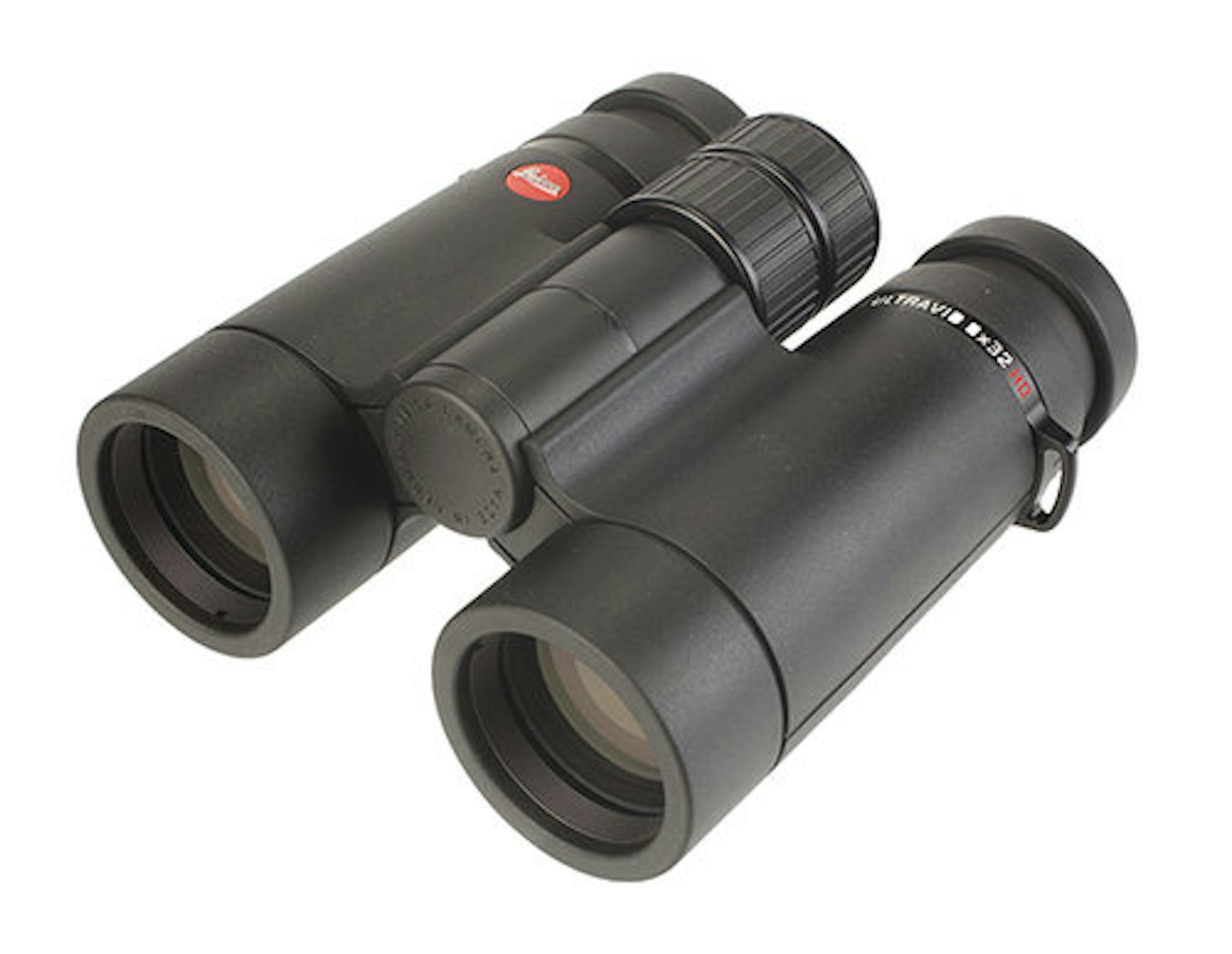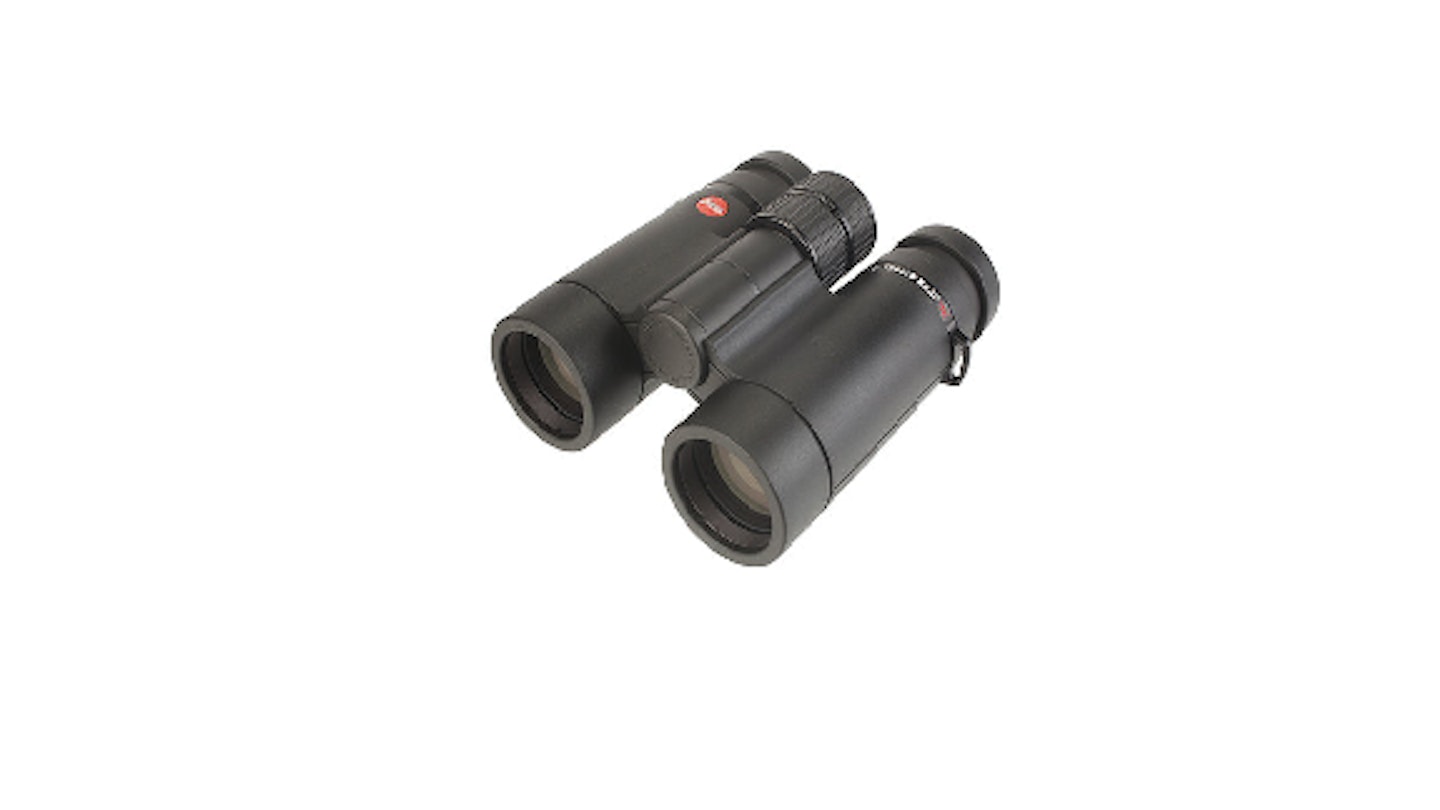Back in 2008, I reviewed the Ultravid 8x32 HD. My conclusion was that it was a very fine binocular. Now I’m looking at the Ultravid HD Plus. To split these close relatives, look for the Red HD on the ‘plus’ version. But what does the ‘plus’ mean? Plus what?
Externally, little has changed. But optically, some things have and it’s mostly about light transmission. The prisms are now made of Schott high-transmission glass – with the claim that ‘the smallest detail can be identified even in late twilight’. There are new coatings, too, which ‘increases both the brightness of the image and the contrast while maintaining accurate colours’.

Leica Ultravid HD-Plus 8x32 binoculars specification
Field of view (@1000 m): 135m (7.7 degrees)
Close focus: 2.2m
Eye relief: 13.3mm
Dimensions: 117 x 55 x 119mm
Weight: 560g
RRP: £1,350
Warranty: 10 years
Accessories: Contoured neoprene strap, rainguard; lens cloth, tethered removable objective covers, cordura case.
Leica Ultravid HD-Plus 8x32 binoculars review
So what are they like to look through? In short, very, very good. The view is natural, with excellent sharpness and very good brightness and contrast. At 7.7 degrees it’s pretty wide, too, a little narrower than its competitors, but only a tad. By today’s standards, the close-focus, quoted at 2.2m, is not exceptional, but in practice is fine for everything bar up-very-close insect watching. The Ultravid gave me some great views of a hovering Migrant Hawker which was reasonably close, and actually, when I measured, I could focus the Ultravid down to about 2.05m.
Can the smallest detail be identified in late twilight? At sunset with about 60% cloud cover this little binocular was picking out foliage colour on distant trees and pulling detail out of closer shadows. Fifteen minutes later it was doing the same thing, only less so. By 30 minutes after sunset, there was no sign of any real detail in the shadows, but I could still see a hint of colour on the distant foliage. All in all, no complaints on this front.
To get critical, there is perhaps just a little edge softness, but nothing that distracts. There were some occasional reflections, and I did detect a bit of colour fringing a few times – making sure your eyes are lined up properly with the binocular helps with this. I don’t want to overstate any of these – they are minor and I had my reviewer’s head on.
In the hand, this binocular has a great feel. The design is simple and elegant and not over-adorned with branding – just the classic red dot. I like the fact that, unlike its bigger siblings (the 42 mm Ultravids), there are no ridges to tell you where to put your thumbs. The build quality is very good. It is waterproof, with hydrophobic coating on the outer lens surfaces, a magnesium chassis, a titanium axle and rubber armouring. This is a very compact, lightweight binocular – it suits me, but some may find it too small.
The two-finger wide focussing wheel is ridged, nicely grippy, and delivers very good focusing precision. It moves very smoothly against moderate resistance with a bit less than one and a quarter turns, clockwise, to infinity. To adjust the dioptre you pull up the top half of the focussing wheel, twist, and then push it down to lock – and you can see your setting through a window.
The eye-cups twist up and down with one intermediate position. I found them too stiff, but you are unlikely to be constantly changing their position so it’s not really a problem. The 13.3mm of eye-relief may not be enough if you wear glasses when you use binoculars, and the rainguard was too tight a fit for my liking!
Verdict

This Ultravid HD Plus is a classy, top-end, mid-size binocular, with, to my eye, a retro look. Optically, there’s little to fault and for me, its size and simple ergonomics make it a pleasure to handle. One final point – the other big brands have models in the same niche, with similar specs, but the Leica has the lowest RRP, which, believe it or not, is £310 less than its predecessor.

